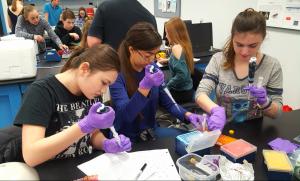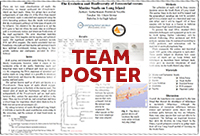

- Program:
- Barcode Long Island
- Year:
- 2017-18
- Research Topic:
- Wildlife & health
- Taxonomic Group Studied:
- Animals: Invertebrate
Project:
The effect of vegetated buffer zones on aquatic biodiversity
- Students:
- Caitlin Tucker, Kaya Manolt, Madison Tutone
- School:
- Sachem North High School, Suffolk
- Mentors:
- Monica Marlowe
Abstract:
Water quality is known to have a direct correlation with biodiversity. Good water quality usually has lower nitrates and phosphates, a neutral pH, and increased dissolved oxygen. These parameters promote biodiversity and attract organisms that are indicators of good water quality. The presence of a buffer zone can affect the water quality of a wetland by reducing nitrates and phosphates, therefore preventing eutrophic events. We hypothesized that Pond X, which has a buffer zone, would have better water quality and increased biodiversity, while Pond Y, with no buffer zone, would have poor water quality and less biodiversity. Last year, our results supported our hypothesis, with Pond Y having higher nutrient levels and a lower overall biodiversity. At Pond X, we identified indicator species, such as dragonfly larvae, as well as sequenced two novel species. We concluded that the higher water quality and biodiversity is due to the vegetated buffer zone. This year, we will be using the same

